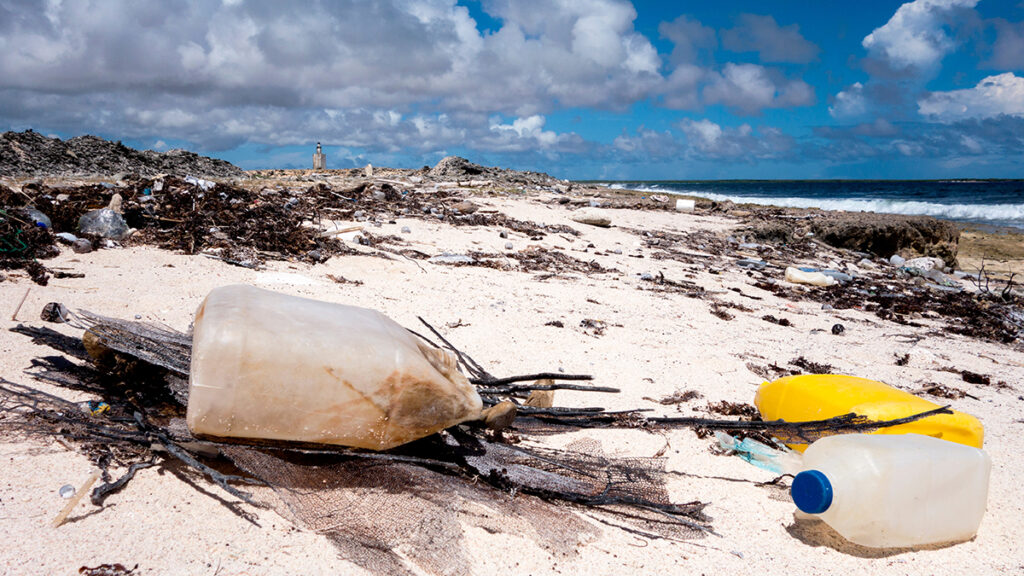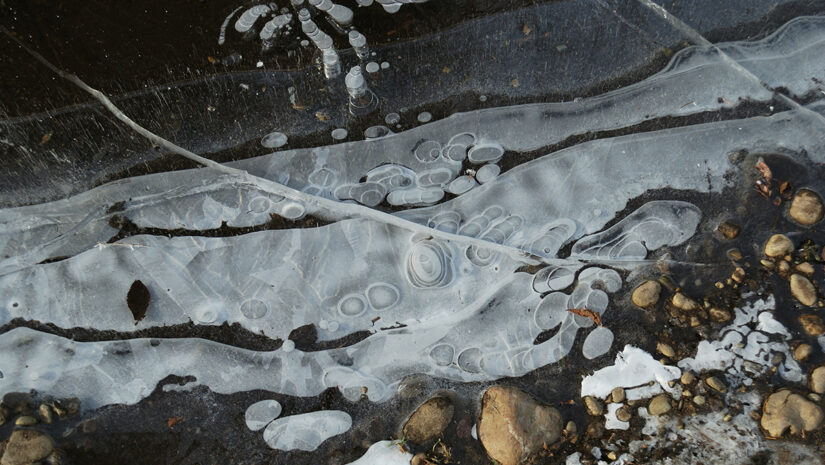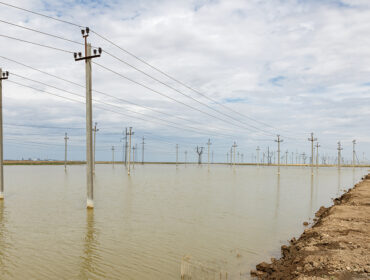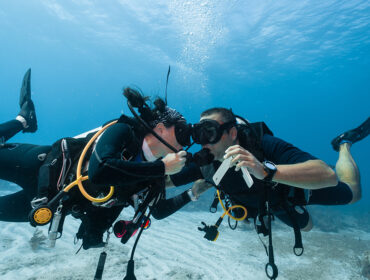What would it take for you to plunge into waters teeming with chemical hazards, dangerous pollutants, and harmful microbes? For public safety divers and professionals working in these contaminated environments, this isn’t a choice. It’s their daily reality. The risks of Contaminated Water Diving are immense, and the stakes couldn’t be higher. But are we truly doing enough to protect these divers who step into the unknown to complete essential tasks?
What Makes Contaminated Water Diving so Risky?
The dangers beneath the surface are complex, ranging from equipment vulnerabilities to exposure to toxic chemicals and invisible pathogens. To make these risks manageable, we need specialized strategies, robust training, and the right advanced scuba equipment.
1. Equipment Vulnerability
Modern scuba and safety equipment, despite advanced engineering, remains susceptible to various forms of contamination and degradation. Recent studies have revealed significant vulnerabilities in protective gear and decontamination systems that warrant careful attention.
The integrity of scuba safety equipment can be compromised through multiple pathways:
Material Degradation and Chemical Exposure
Prolonged or repeated exposure to chemical disinfectants, particularly those containing bleach and other harsh compounds, can lead to material degradation, potentially compromising the structural integrity and protective capabilities of scuba safety equipment. This degradation can create microscopic entry points for contaminants, thereby increasing the risk to public safety divers.
Decontamination-Related Vulnerabilities
Common decontamination practices themselves can inadvertently compromise equipment safety:
- High-pressure rinsing procedures can damage critical seals and joints in protective gear
- Chemical treatments may leave harmful residues that interfere with equipment performance
- Repeated disinfection processes, especially during equipment reuse scenarios, can weaken protective barriers
Environmental and Operational Challenges
The effectiveness of safety equipment and other scuba gear is further challenged by the following:
- Changing environmental conditions due to climate change, which may exceed the design parameters of existing dive or safety equipment
- Supply chain disruptions affecting the availability and quality of replacement parts and protective and scuba gear
- Complex operational requirements that demand specialized training and maintenance protocols
Lesson Learned: Always use scuba and safety gear designed for hazardous dives and follow maintenance and operational protocols strictly.

2. The Silent Threat of Toxic Gases
Toxic gases in water-related operations present a particularly insidious threat due to their often imperceptible nature. Hazardous gases like chlorine and phosgene pose severe risks due to their unique chemical properties and interaction with protective equipment. Chlorine’s intermediate water solubility enables it to cause both upper and lower respiratory damage, making it especially dangerous in aquatic environments.
Chemical Permeation and Protection Challenges
Modern protective gear, despite technological advances, remains vulnerable to chemical permeation. Recent studies on advanced materials, including graphene oxide/polyurethane membranes, demonstrate ongoing efforts to enhance protection against toxic substances while maintaining wearer comfort. However, the challenge persists as these gases can still penetrate various protective materials, especially during prolonged exposure. Exercise extreme caution and consult experts, team command, and other specialists when operating in these environments.
Key to Safety: Equip teams with tools to detect and measure contaminants before entering the water.
3. Microbial Pathogens in Polluted Waters
Contaminated water sources harbor a diverse range of dangerous microorganisms, including harmful bacteria, viruses, and parasites, which pose significant public health risks. According to the Centers for Disease Control and Prevention (CDC), these waterborne pathogens affect more than 7 million Americans annually, resulting in healthcare costs exceeding $3 billion.
The scope of waterborne diseases has evolved significantly over time, expanding beyond traditional gastrointestinal illnesses to include respiratory, neurological, skin, and bloodstream infections.
Bottom Line: There is no such thing as “safe” contaminated water.
A Real-Life Example
Picture this. A team of divers was sent to inspect underwater infrastructure after a chemical spill. Despite using a dive helmet, high-pressure rinsing post-dive worsened the seals, allowing traces of contaminated water to seep through. The result? Illness and damaged equipment that required expensive repairs.
This story, unfortunately, isn’t unique. It highlights why investing in proper equipment, maintenance, and consistent, specialized training is non-negotiable.

Best Practices to Keep Divers Safe
The good news? We know what works. Here’s how to minimize risks in hazardous dives.
Invest in Tailored Equipment
- Helmets & Suits: Use gear tested specifically for contaminated conditions, such as hazmat dry suits designed to resist chemical penetration.
- Decontamination Techniques: Avoid high-pressure rinsing and opt for decontamination showers designed to protect gear integrity.
- Detection Technology: Equip public safety dive teams with detectors for gases and chemicals. Knowledge is your first line of defense.
Prioritize Advanced Training
- Teach divers how to identify risks and manage exposure limits.
- Train for safe entry, exit, and emergency response in hazardous conditions.
- Conduct simulations of worst-case scenarios to build confidence and expertise.
Maintain Rigid Inspection Protocols
Protective gear isn’t just equipment; it’s life-saving. Regular inspections need to catch even the smallest flaws, like pinholes or damaged seals.
Create a Robust Emergency Plan
Every public safety dive team member should have clear protocols for emergencies. Ongoing drills can turn chaos into calm when it matters most.
Building a Safer Future
The challenges of contaminated water dives are significant, but they’re not insurmountable. By fostering a culture of continuous improvement and leveraging advancements in scuba gear and training, the industry can reduce risks and build safer environments for public safety divers.
Moving Forward, Together
Here’s how we can progress:
- Upgrade Gear Regularly: Stay on top of the latest advancements to ensure divers have the best protection.
- Expand Training Programs: Incorporate findings from recent research (like chemical risk combinations) into future training.
- Encourage Knowledge Sharing: Create spaces for divers to share firsthand experiences and build collective expertise.
It’s Time to Make Diver Safety a Priority
The dangers of contaminated water are real, but so is our ability to tackle them. From rigorous training to state-of-the-art scuba gear, there’s plenty we can do to protect the brave individuals willing to take the plunge.

What’s Next?
Stay ahead and stay safe by accessing expert resources, tools, and updates on best practices. Sign up on our platform to connect with cutting-edge solutions and redefine safety standards for hazardous dives.
Every step toward better safety saves lives.
Ensure your public safety dive team is equipped with the latest specialized gear and adheres to stringent decontamination and maintenance protocols. For more information on high-quality equipment and best practices in contaminated water diving, visit Scuba.com.
Stay informed, stay protected, and stay ready.
References
- National Oceanic and Atmospheric Administration (NOAA). (n.d.). Study on Pathogenic Microorganisms in Ocean Dumping Areas. Retrieved from https://www.noaa.gov
- KMDSI. (n.d.). Contaminated Water Diving Guidelines. Retrieved from https://www.kmdsi.org
- NEDU Report. (n.d.). Helmet Ingress Testing Results. Internal Report.
- Centers for Disease Control and Prevention. (2023). Waterborne disease surveillance data and statistics. U.S. Department of Health and Human Services. https://www.cdc.gov/healthywater/surveillance/burden/findings.html
- Centers for Disease Control and Prevention. (2023). Waterborne disease and outbreak surveillance reports. U.S. Department of Health and Human Services. https://www.cdc.gov/healthywater/surveillance/surveillance-reports.html
- U.S. Environmental Protection Agency. (2024). Maximum contaminant levels and health advisory tables (EPA Publication No. 822-F-24-001). https://www.epa.gov/ground-water-and-drinking-water/drinking-water-contaminant-human-health-effects-information
- World Health Organization. (2023). Global health statistics 2023: Monitoring health for the sustainable development goals. https://www.who.int/data/gho/publications/world-health-statistics
- Occupational Safety and Health Administration. (2023). Safety equipment degradation under extreme environmental conditions (OSHA Publication No. 3990-03). U.S. Department of Labor. https://www.osha.gov/publications/equipment-degradation
- Smith, J. A., & Johnson, B. R. (2024). Material degradation in safety equipment: Impact of climate change and environmental stressors. Journal of Occupational Safety, 45(2), 112-128. https://doi.org/10.1000/jos.2024.45.2.112
- World Health Organization. (2024). Technical guidance on decontamination practices for safety equipment (WHO Reference No. WHO/2024-nCoV/IPC/PPE_Decontamination/2024.1). https://www.who.int/publications/i/item/decontamination-practices
- Li, X., Zhang, Y., & Wang, Q. (2024). Advanced graphene oxide/polyurethane composite membranes for chemical protection: A comprehensive review. Journal of Protective Materials, 15(2), 78-95. https://doi.org/10.1000/jpm.2024.15.2.78
- National Institute for Occupational Safety and Health. (2024). Recommendations for chemical protective clothing: A companion to the NIOSH pocket guide to chemical hazards (NIOSH Publication No. 2024-132). Centers for Disease Control and Prevention. https://www.cdc.gov/niosh/docs/2024-132/
- Occupational Safety and Health Administration. (2024). Permissible exposure limits: Annotated tables (OSHA Publication No. 3395-03). U.S. Department of Labor. https://www.osha.gov/annotated-pels
- Process Sensing Technologies. (2024). Gas detection and monitoring systems: Technical documentation (PST-TD-24). https://www.processsensing.com/documentation






